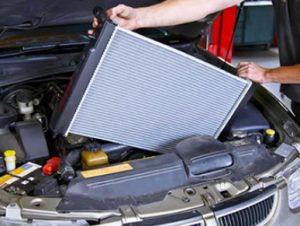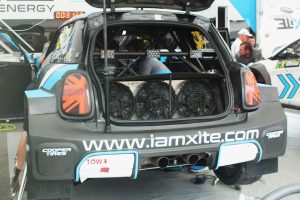The position of a radiator—whether mounted front, mid (side/center), or rear —is often overlooked. Yet it plays a major role in cooling performance, airflow efficiency, packaging, and even vehicle handling. Choosing the “right” location for your radiator can make the difference between optimal thermal control and persistent overheating, especially under extreme conditions.
In this article, we’ll examine the pros and cons of different radiator mounting positions, the airflow and plumbing implications, and best practices for each layout. We’ll also include comparative tables and actionable design tips. And when you’re ready to choose parts, you can Buy Radiator & Components online.
Why Mounting Position Matters

Before diving into each layout, let’s consider why position matters:
-
Airflow availability: Radiator needs access to cool, fresh air. The closer and more unobstructed the airflow, the better the cooling.
-
Plumbing length & pressure losses: Longer coolant runs increase resistance, pressure drops, and require more pump power.
-
Heat soak & exhaust path: Radiators located near hot engine zones or in poor exit airflow can recirculate heat.
-
Weight distribution & balance: Moving heavy components like the radiator impacts vehicle dynamics.
-
Serviceability & packaging constraints: Some positions are harder to access or fit within the envelope.
Front-Mounted Radiator
This is by far the most common layout for most road vehicles: radiator installed in front of the engine, directly behind the front grille.
Advantages
-
Maximum access to ram air — as vehicle moves forward, air enters through the grille and passes through the radiator.
-
Shortest coolant plumbing to engine front (especially in front-engine vehicles).
-
Easier packaging of ducting, fans, and shrouds.
-
Lower heat soak from other hot components (exhaust, turbo, etc.).
Disadvantages & Challenges
-
Potential for debris or damage since it’s front-facing.
-
Airflow may be blocked or restricted by crash structures, crash bars, or bumper elements.
-
Hot air exiting the radiator must be evacuated properly so it doesn’t re-enter intake or other engine compartments.
-
In custom off-road or race builds, front space may be occupied (winches, accessories), limiting radiator size.
Real-world Considerations
In off-road builds, some designers have debated moving the radiator away from the front to protect it, but often discovered that airflow and pump load penalties outweigh benefits.
Front mounting remains a safe, efficient default in most automotive applications.
Mid-Mounted Radiator (Side / Central)
Mid-mounted radiator layouts place the radiator somewhere along the side, near the firewall, beneath the hood, or on the side of a mid-engine vehicle. In race or exotic mid-engine cars, radiators may be side-mounted with ducting (left and right) or centrally mounted behind the cabin bulkhead, connected by long coolant pipes.
Advantages
-
Improved center of gravity and balance when radiator mass is closer to the vehicle’s center.
-
Cleaner front design — may allow sleeker or narrower grille.
-
Potential to avoid extreme front-end heat loads or crash damage zones.
Disadvantages & Constraints
-
Longer coolant runs increase pressure drop, more hose/fitting complexity, and potential for flow imbalance.
-
Requires well-engineered ducting and airflow channels to feed the radiator.
-
Hot air exit must be managed so it doesn’t heat the cabin or intake.
-
In mid-engine cars, the radiator may compete with engine packaging.
In mid-engine designs in general automotive context, the engine sits behind the passenger compartment but ahead of the rear axle. Radiators are often placed on the sides or just ahead/behind the engine block.
Example: a central mid-mounted radiator might receive air via side ducts, with exit vents near the rear deck or side vents.
Rear-Mounted Radiator
Historically rare in street cars but sometimes used in specialized or custom builds (hot rods, off-roaders, custom chassis). Here, the radiator is located behind the cabin or in the rear section of the vehicle.
Advantages
-
Cleaner front end, less clutter in the nose region.
-
Avoids front collision damage to the radiator.
-
In some setups, heat is kept behind occupants, improving thermal comfort.
Disadvantages & Major Challenges
-
Very long coolant plumbing — greater pressure drop, pump load, and lag.
-
Airflow supply is often weaker at the rear; radiator may be starved for fresh air.
-
Hot air may recirculate — heated by body turbulence or proximity to exhaust.
-
Service, packaging, and cooling duct design become far more complex.
One builder reported rear-mounted radiator setups worked if fans ran continuously, because ram air was insufficient without direct front intake paths.
In desert racing or buggy builds, some do mount rear radiators for packaging or crash clearance reasons—but accept tradeoffs in airflow and cooling demand.
Comparison Table: Front / Mid / Rear
| Feature / Metric | Front-Mounted Radiator | Mid-Mounted Radiator | Rear-Mounted Radiator |
|---|---|---|---|
| Access to ram air / airflow | Excellent (if grille open) | Moderate (depends on ducting) | Often limited / weaker |
| Coolant plumbing length & loss | Short | Moderate (longer) | Longest plumbing & losses |
| Packaging flexibility | Good (common layout) | Requires careful integration | Challenging in many vehicle types |
| Heat soak & interference risk | Low (away from exhaust) | Medium to high, depending on layout | High, near heat sources |
| Weight distribution impact | Front-heavy bias | Balanced possible | Rear bias (may impact handling) |
| Serviceability & accessibility | Easy front access | Moderate | Often difficult access |
| Complexity & cost | Relatively lower | Higher (ducting, plumbing) | Highest (long pipes, engineered cooling paths) |
Good Practices for Each Placement
For Front-Mounted Radiators
-
Use ducting and shrouds to funnel air through the core, and seal bypass paths (gaps, edges).
-
Include exit vents or scoops to help hot air escape cleanly instead of recirculation.
-
Consider active shutters to reduce drag when cooling demand is low.
-
Ensure that front crash structures do not block airflow to the radiator core.
For Mid-Mounted Radiators
-
Ensure balanced coolant paths (equal hose lengths, proper flow splits).
-
Use side intakes or vents channeling air to the radiator.
-
Provide exhaust vents in the bodywork to let hot air escape without stalling.
-
Package fans and blowers to assist airflow at low speeds if ram air is insufficient.
For Rear-Mounted Radiators
-
Invest in powerful electric fans to compensate for weak ram air.
-
Design direct air intake scoops or ducts toward the radiator location.
-
Ensure exit paths are well-planned — hood vents, rear deck vents, or side exit ducts.
-
Offset pump sizing and plumbing resistance — larger pump may be needed.
Flow & Pressure Loss Considerations
When relocating a radiator away from the front, do not underestimate the impact of additional hose runs, bends, and fittings. These elements add frictional and minor losses that reduce effective coolant flow and raise pump load. The pressure-drop equation in pipelines (Darcy-Weisbach, etc.) applies.
Designers often budget a safety margin in pump capacity and use larger diameter hoses to mitigate these losses.
Case Study: Why Many Race Cars Use Mid / Rear Radiators

In certain motorsport or exotic supercar designs, front space may be taken by aerodynamics (splitters, diffusers) or crash structures. Engineers move radiators mid or rear, optimizing weight distribution and aerodynamics. To make it work, they:
-
Use lightweight, high-flow plumbing
-
Deploy large fans and efficient ducting
-
Ensure hot-air exit paths (venting in body panels)
-
Accept some extra pump load
These layouts are often tuned using CFD and thermal simulation to verify cooling under full load conditions.
Summary & Key Takeaways
-
Radiator mounting position significantly influences cooling performance, vehicle balance, and design complexity.
-
Front-mount is the simplest, highest-airflow layout and works well in most vehicles.
-
Mid-mount provides better weight distribution but demands careful plumbing and airflow design.
-
Rear-mount can give clean front aesthetics and crash protection, but pay heavy costs in plumbing and airflow challenges.
-
Regardless of position, use well-sealed ducting, sufficient fans, and good airflow exit strategies.
-
Always simulate or test under worst-case conditions (low speed, high load) to ensure adequate cooling margin.
When you’re ready to pick components or upgrade for your chosen layout, feel free to explore quality parts and Buy Radiator & Components online to support your design goals.
By understanding why radiator mounting position matters, you can make informed decisions and optimize cooling efficiency, packaging, and performance for your vehicle build.